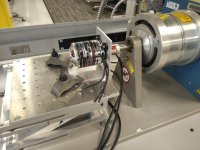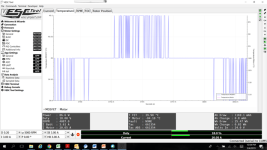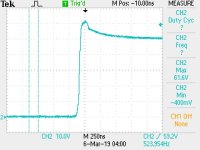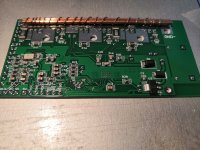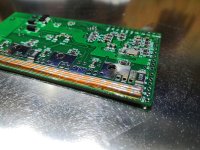Kin
10 kW
Personally I don't agree that surface mount fets are significantly more difficult to replace than To-220. Maybe harder to heatsink though.
Key to surface mounts though is knowing the right technique and having the right tools. I can do a lot more at work because we have very powerful & responsive metcal irons. We also have good hot air sources. Combined with general "think about the surface tension" techniques for smaller components, surface mounts are relatively easy.
Designing your own boards though you need to sometimes take special steps. For example, a surface mount fet might have an AxB size pad, but I will make it an (A+1mm)xB pad in order to get contact to the metal pad with a soldering tip. Or, go from underneath with a small hole that you fill with solder to conduct heat from the bottom. Non-standard pads and the like to think about assembly.
A place like oshstencil.com or elsewhere is a great source for kapton stencils. Even in small board numbers it can be easier to use a $10 dedicated electric range and a hot air iron (for the local touch application of heat) to reflow a board.
Overall I appreciate a lot design consideration for serviceability, but just wanted to make a small plug for consideration that surface mounts are not all that bad with a few techniques and small pad design considerations.
If you have trouble desoldering a surface mount chip, especially if the pads weren't designed for solder tips and you don't want to reflow the whole board, then 'chipquick" is amazing shit. it produces a eutectic with the existing solder and dramatically reduces the melting point. Then you clean up the solder with a wick, apply a ton of regular solder (to scoop up any remaining of the chipquick) and remove the regular solder and resolder.
________________
My comment above is a little long winded and indirectly relevant to conversation in this thread. Just want to add more on topic, I like this topic and can't wait to see how it goes! I am hoping to work on a personal project this summer that takes 6 hoverboard motors to run . I would love to leverage the VESC platform, but the current costs for 6X vesc (or 3X dual vesc) are pretty damn high. I'm hoping to see how this goes and whether the price with assembly or without ever gets more manageable.
. I would love to leverage the VESC platform, but the current costs for 6X vesc (or 3X dual vesc) are pretty damn high. I'm hoping to see how this goes and whether the price with assembly or without ever gets more manageable.
Key to surface mounts though is knowing the right technique and having the right tools. I can do a lot more at work because we have very powerful & responsive metcal irons. We also have good hot air sources. Combined with general "think about the surface tension" techniques for smaller components, surface mounts are relatively easy.
Designing your own boards though you need to sometimes take special steps. For example, a surface mount fet might have an AxB size pad, but I will make it an (A+1mm)xB pad in order to get contact to the metal pad with a soldering tip. Or, go from underneath with a small hole that you fill with solder to conduct heat from the bottom. Non-standard pads and the like to think about assembly.
A place like oshstencil.com or elsewhere is a great source for kapton stencils. Even in small board numbers it can be easier to use a $10 dedicated electric range and a hot air iron (for the local touch application of heat) to reflow a board.
Overall I appreciate a lot design consideration for serviceability, but just wanted to make a small plug for consideration that surface mounts are not all that bad with a few techniques and small pad design considerations.
If you have trouble desoldering a surface mount chip, especially if the pads weren't designed for solder tips and you don't want to reflow the whole board, then 'chipquick" is amazing shit. it produces a eutectic with the existing solder and dramatically reduces the melting point. Then you clean up the solder with a wick, apply a ton of regular solder (to scoop up any remaining of the chipquick) and remove the regular solder and resolder.
________________
My comment above is a little long winded and indirectly relevant to conversation in this thread. Just want to add more on topic, I like this topic and can't wait to see how it goes! I am hoping to work on a personal project this summer that takes 6 hoverboard motors to run


